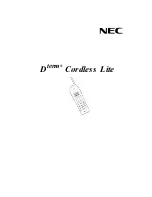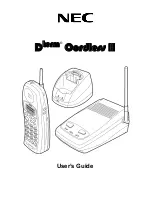
49
touch the antenna unnecessarily when the phone is
in use. Contact with the antenna affects call quality
and may cause the phone to operate at a higher
power level
than otherwise needed.
⍥
American National Standards Institute; National
Council on Radiation Protection and
Measurements; International Commission on Non-
Ionizing
Radiation Protection.
Electronic Devices
Most modern electronic equipment is shielded from
RF signals. However, certain electronic equipment may
not be shielded against the RF signals from
your wireless phone.
Pacemakers
The Health Industry Manufacturers Association
recommends that a minimum separation of six(6” )
inches be maintained between a handheld wireless
phone and a pacemaker to avoid potential
interference with the pacemaker. These
recommendations are consistent with the
independent research by and recommendations of
Wireless Technology Research Persons with
pacemakers:
⍥
Should ALWAYS keep the phone more than six
inches from their pacemaker when the phone is
turned ON.
⍥
Should use the ear opposite the pacemaker to
minimize the potential for interference.
⍥
If you have any reason to suspect that interference
in taking place, turn your phone OFF immediately.
Hearing Aids
Some digital wireless phones may interfere with some
hearing aids. In the event of such interference, you
may want to consult your service provider [or call the
customer service line to discuss alternatives.]
Optional for each phone
TIA Safety Information
48
TIA Safety Information
manufacturer.
Other Medical Devices
If you use any other personal medical device, consult
the manufacturer of your device to determine if they
are adequately shielded from external RF energy. Your
physician may be able to assist you in obtaining this
information.
Turn your phone OFF in health care facilities when any
regulations posted in these areas instruct you to do
so. Hospitals or health care facilities may be
using equipment that could be sensitive to external RF
energy.
Potentially Explosive Atmosphere
Do not install the phone in potentially explosive
atmosphere.
Sparks in such areas could cause an explosion or fire
resulting in bodily injury or even death.
Areas with a potentially explosive atmosphere are
often, but not always marked clearly. Potential areas
may include: fueling areas (such as gasoline stations);
below deck on boats; fuel or chemical transfer or
storage facilities; vehicles using liquefied petroleum
gas (such as propane or butane); areas where the air
contains chemicals or particles (such as grain, dust, or
metal
powders); and any other area where you would
normally be advised to turn
off your vehicle engine.
For Vehicles Equipped with an Air Bag
An air bag inflates with great force. DO NOT place
objects, including either installed or portable wireless
equipment, in the area over the air bag or in the air
bag deployment area. If invehicle wireless equipment
is improperly installed and the air bag inflates, serious
injury could result.
FDA Consumer Update
The U.S. Food and Drug Administration’s Center for
Devices and Radiological Health Consumer Update on
Mobile Phones.
TIA Safety Information
TIA Safety Information
Summary of Contents for LSP-410R
Page 23: ......













































